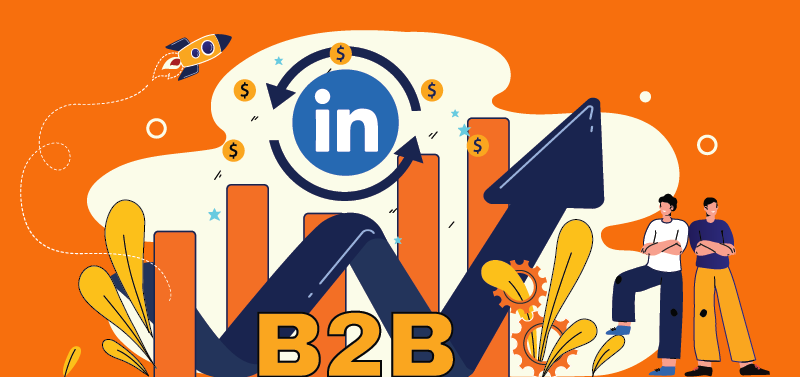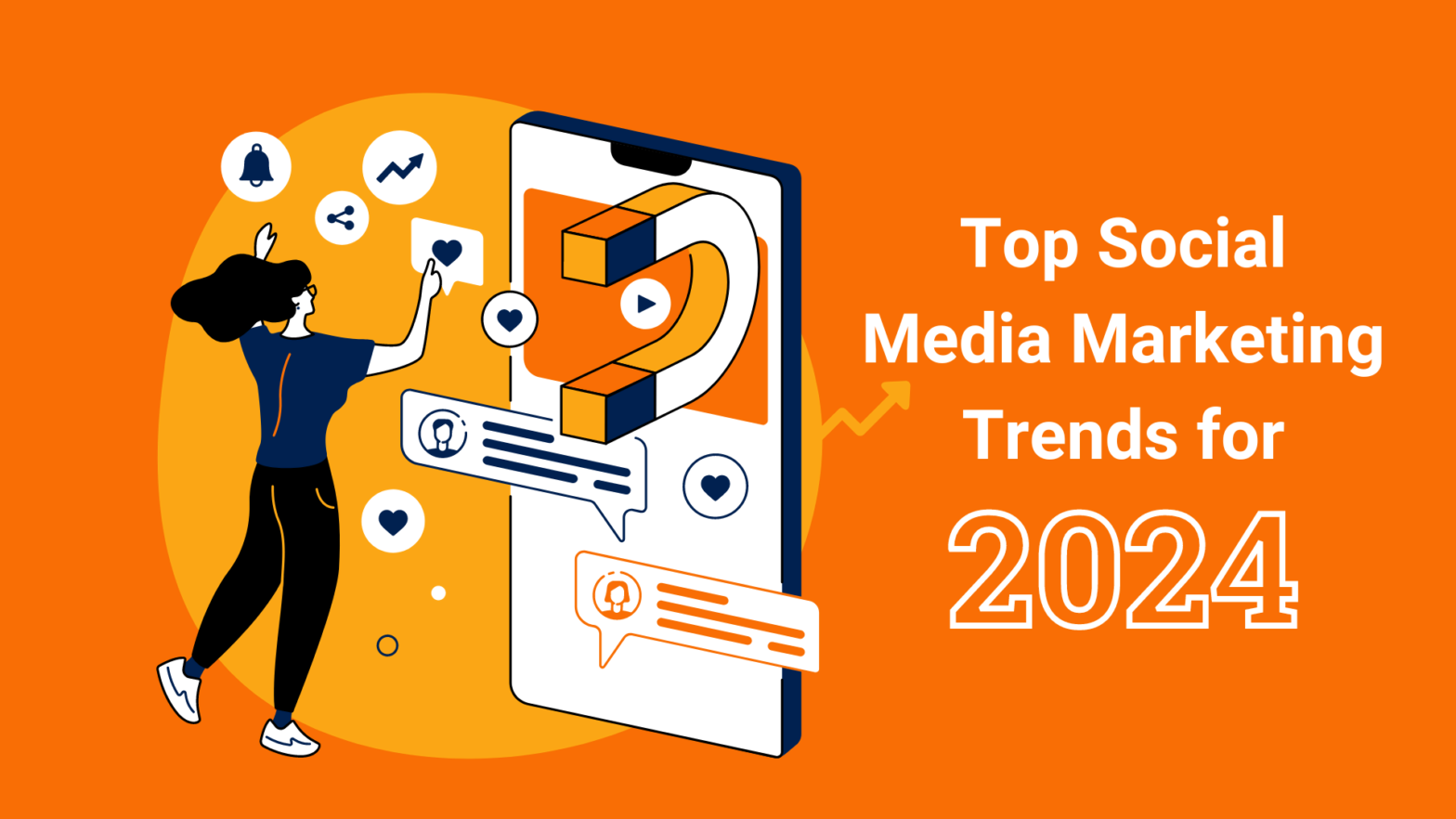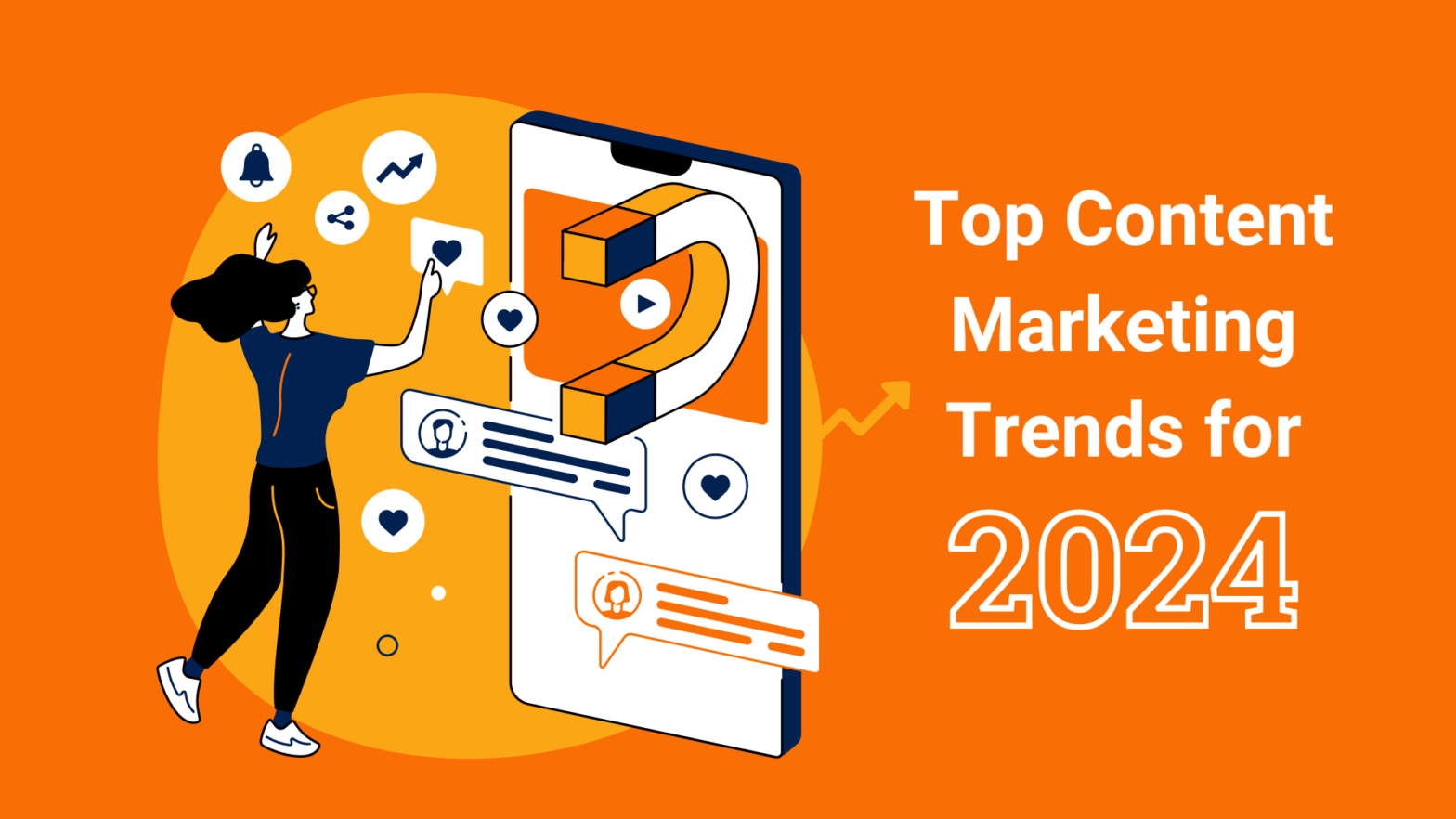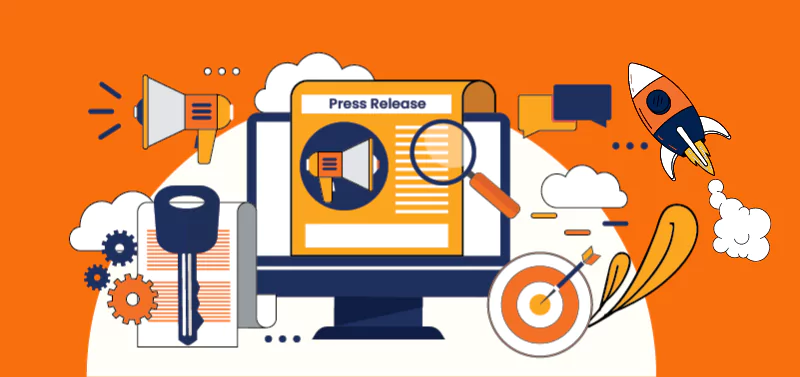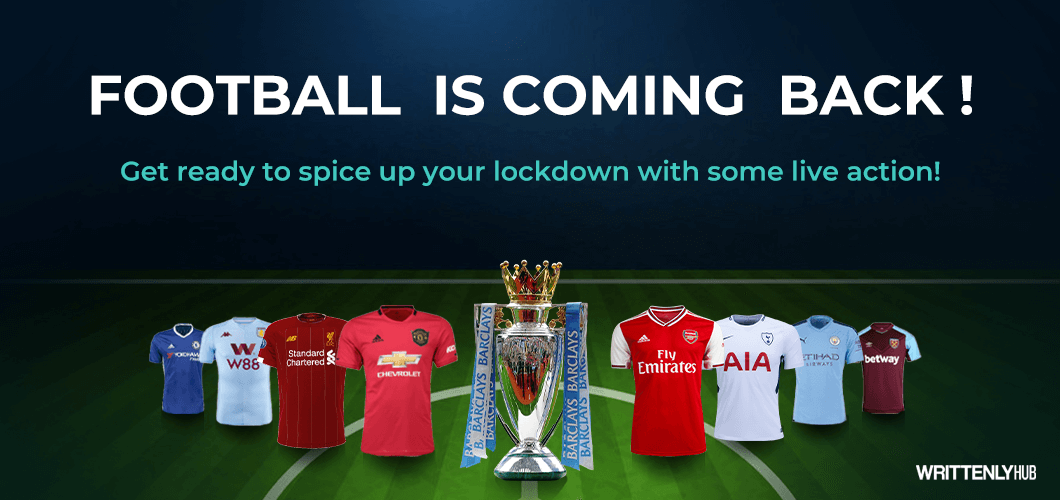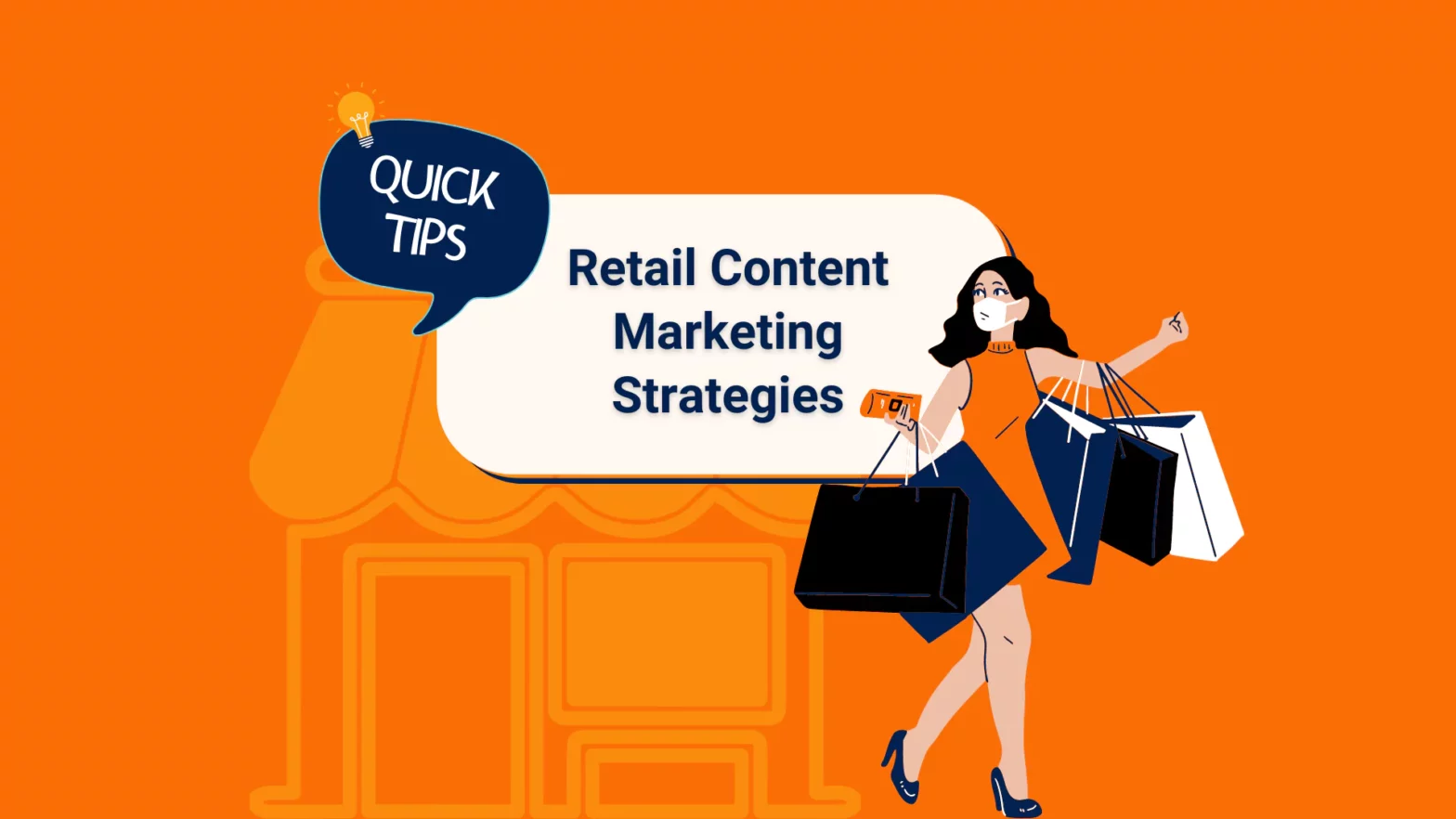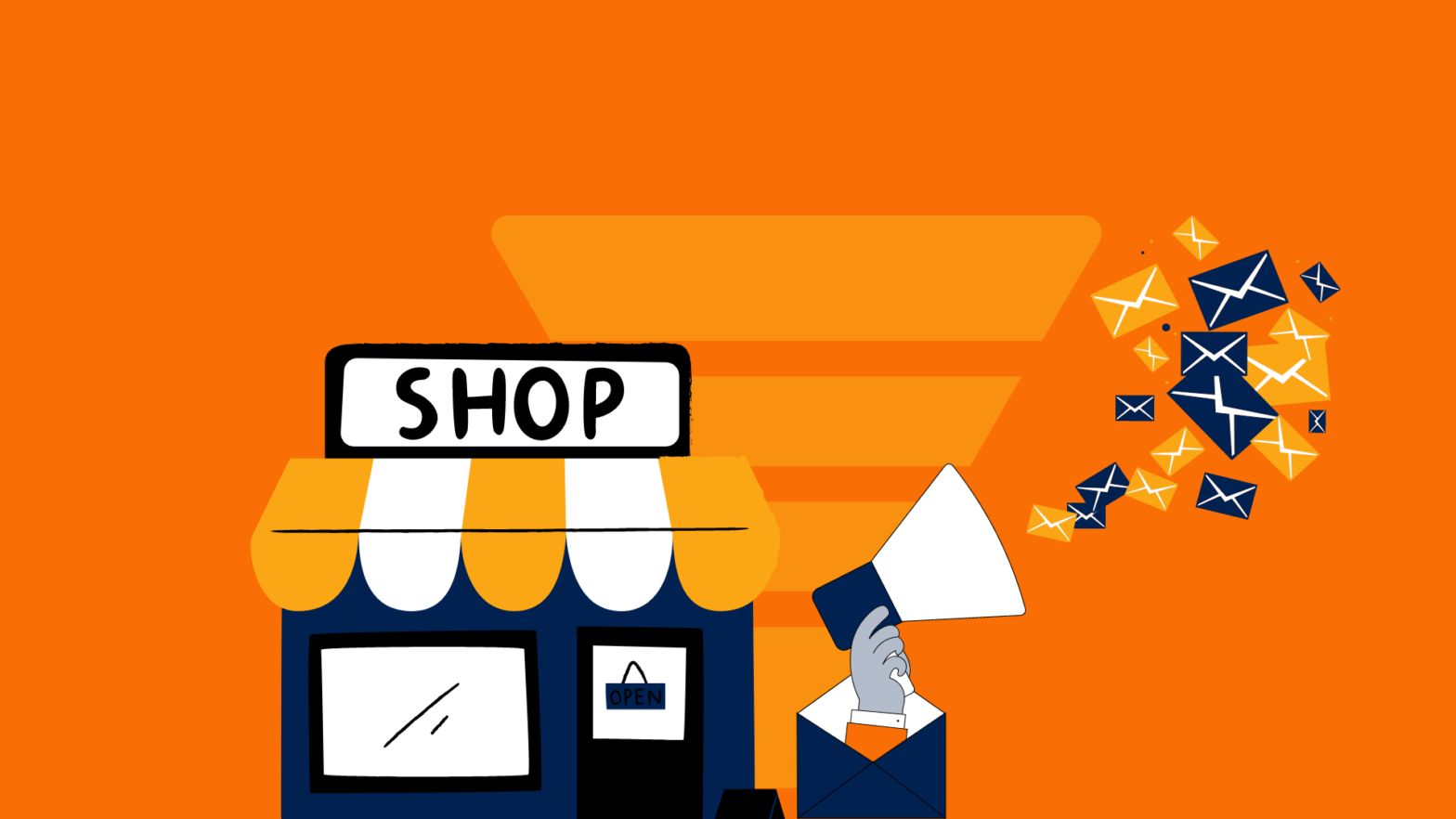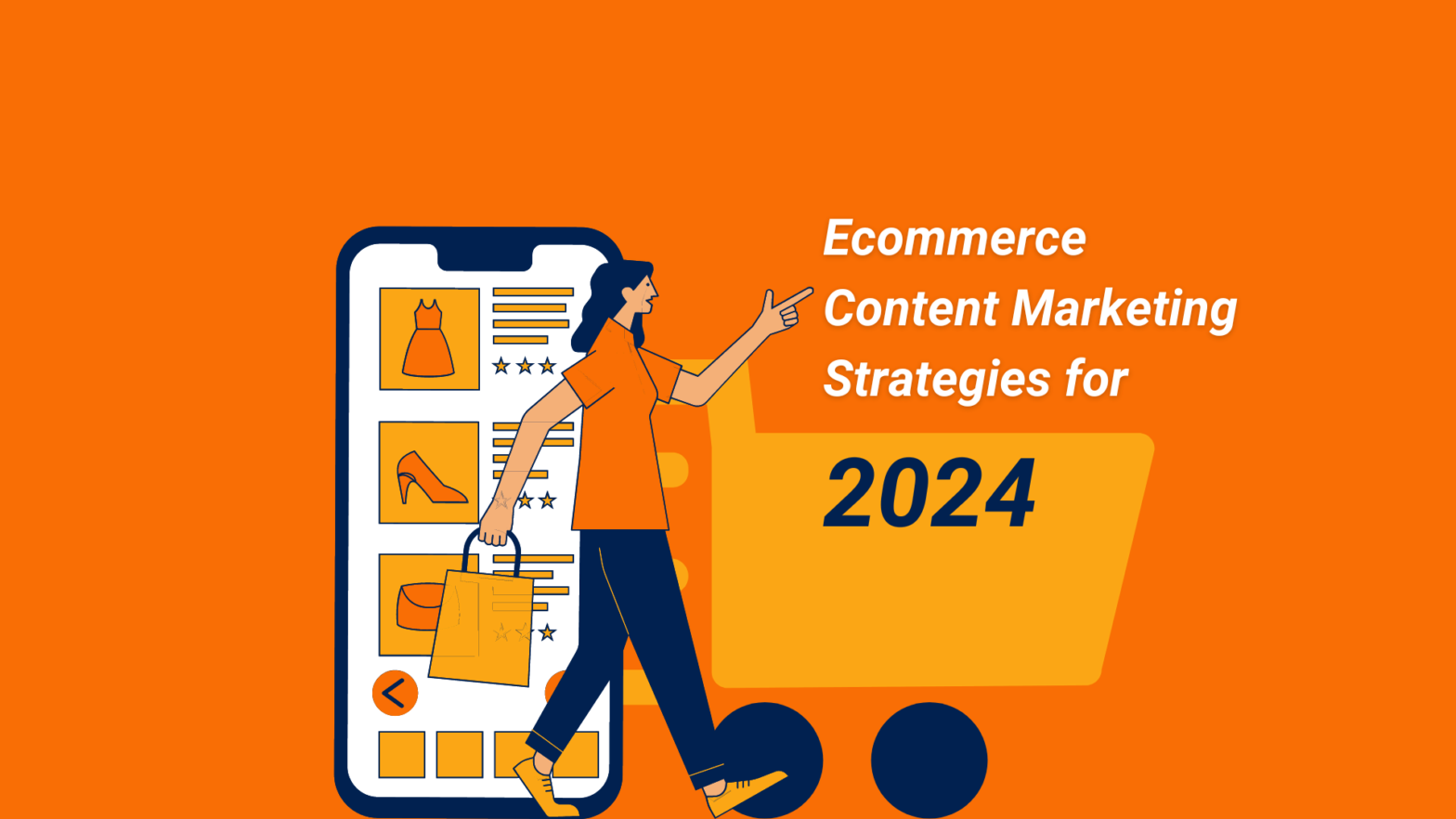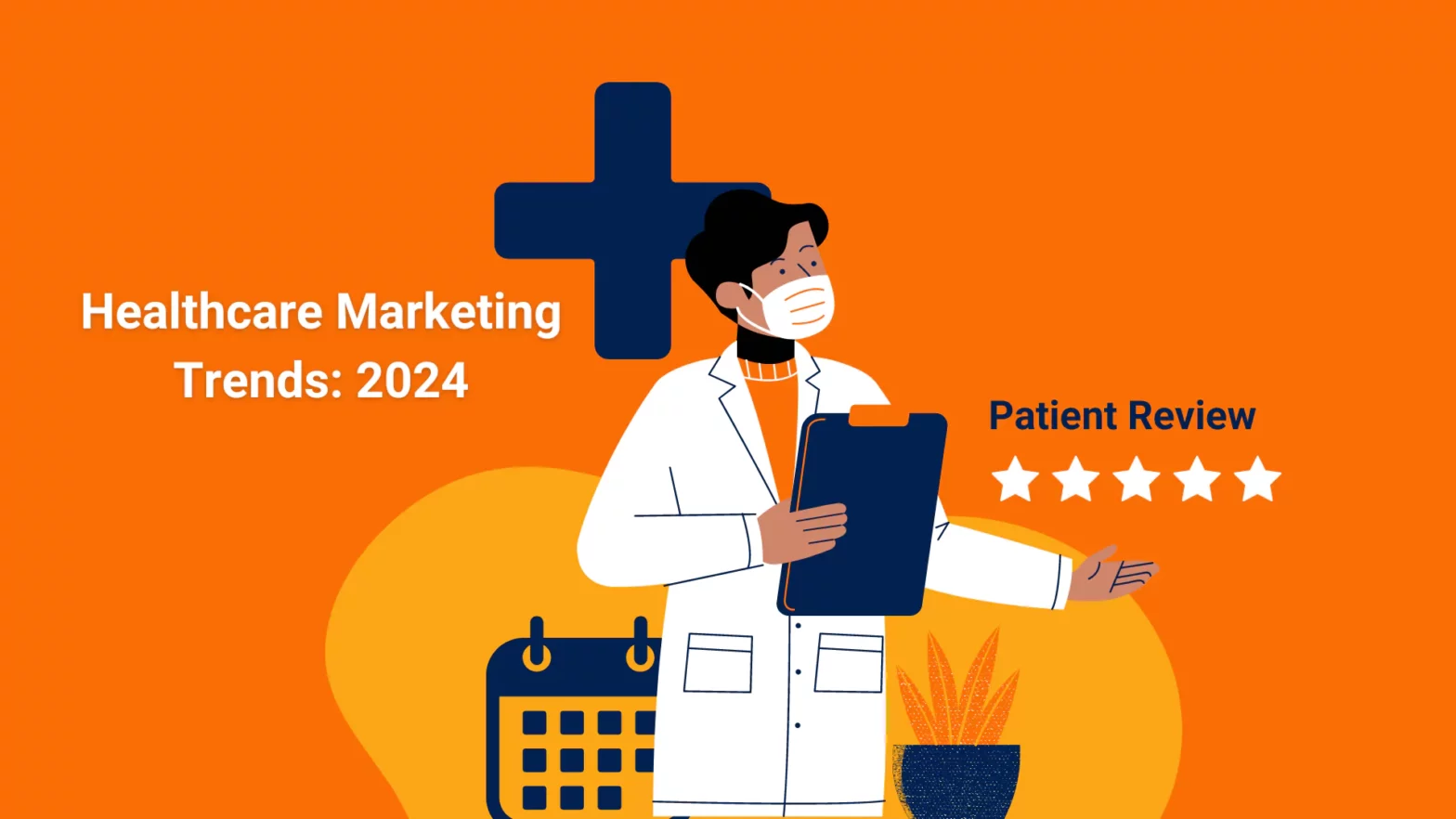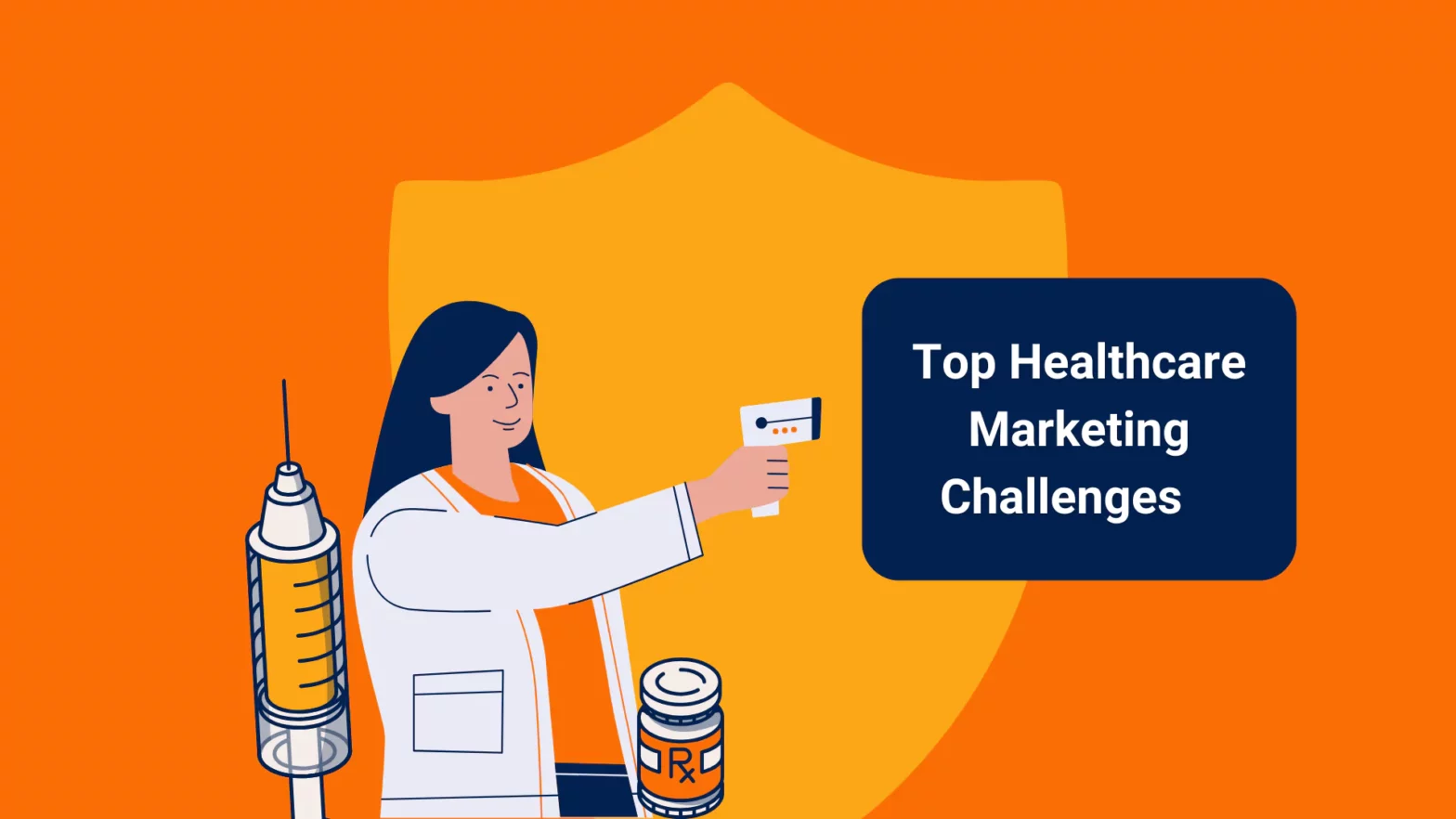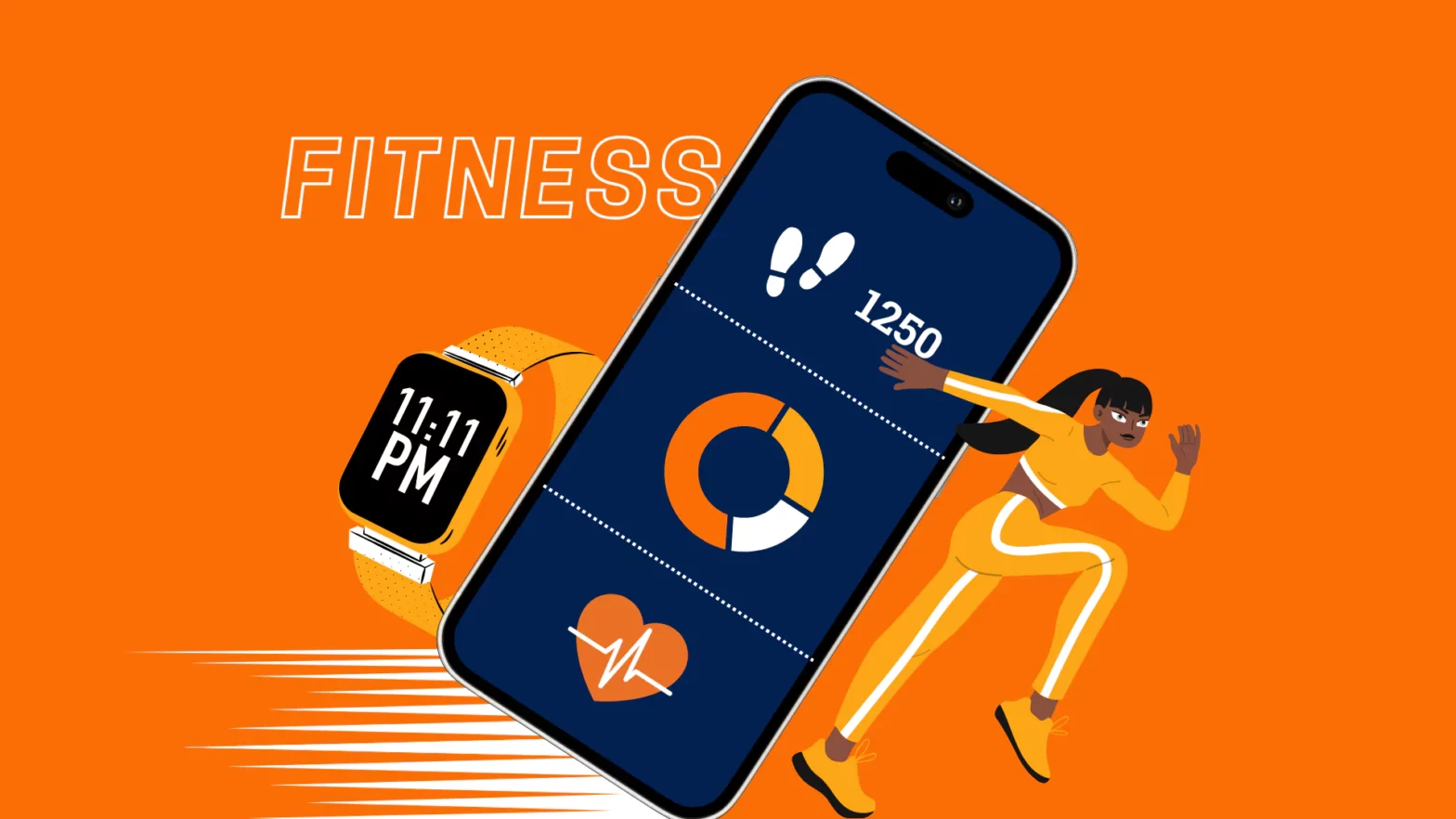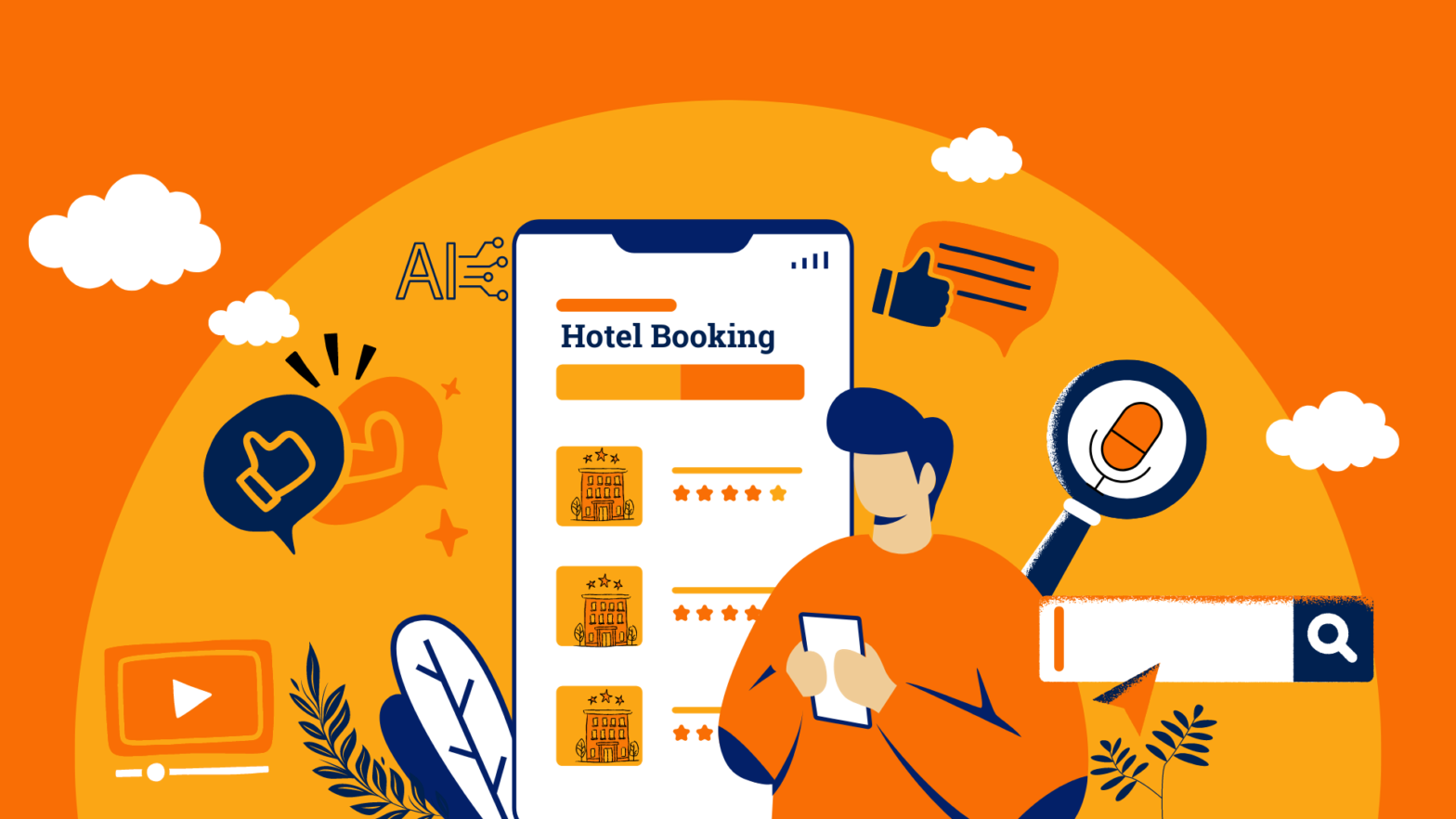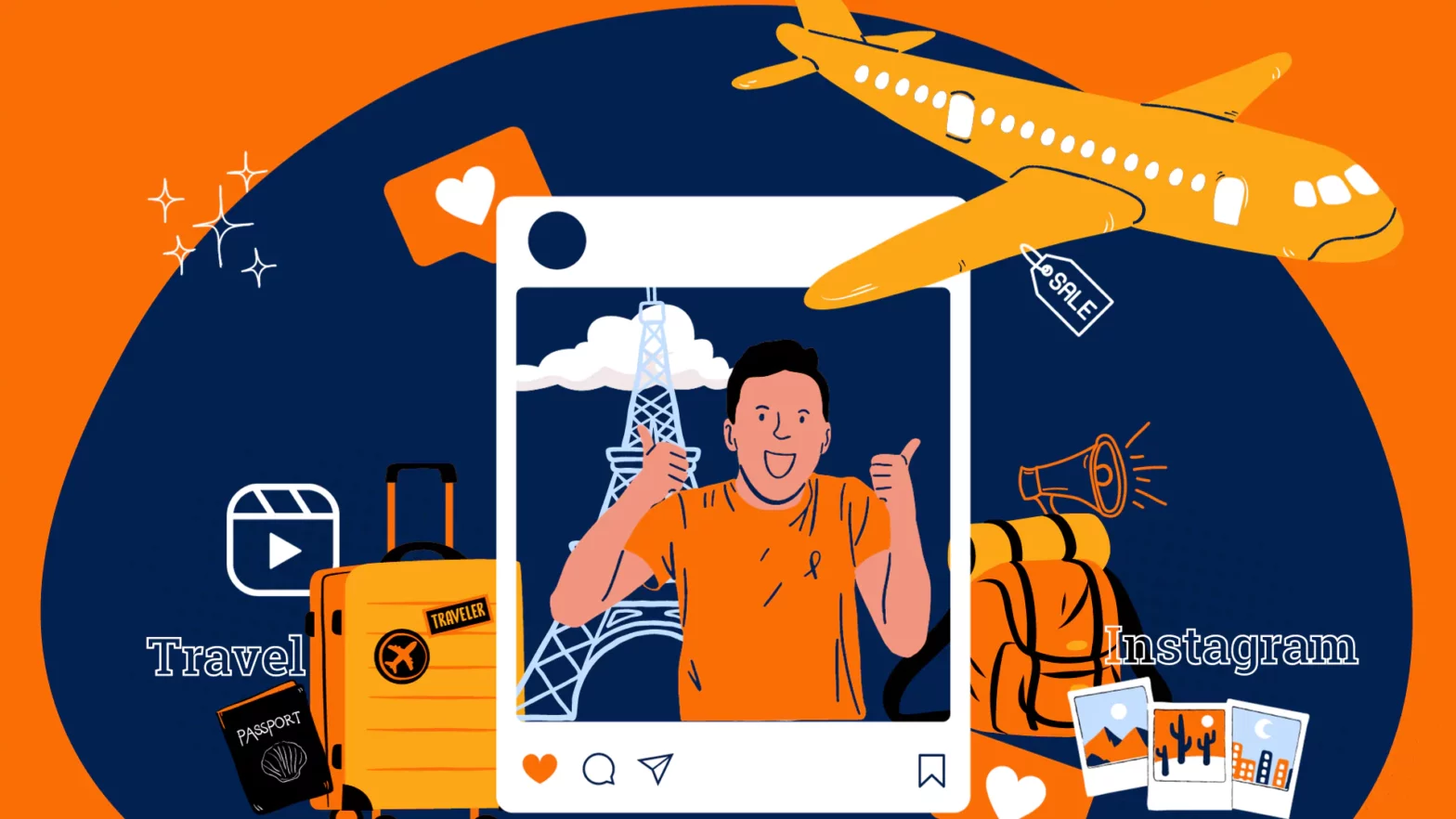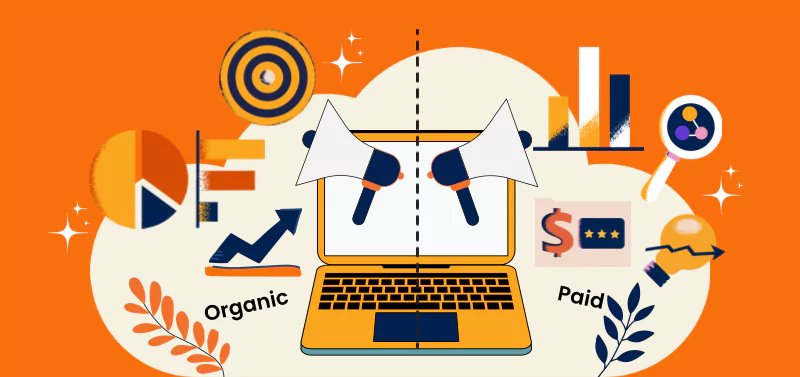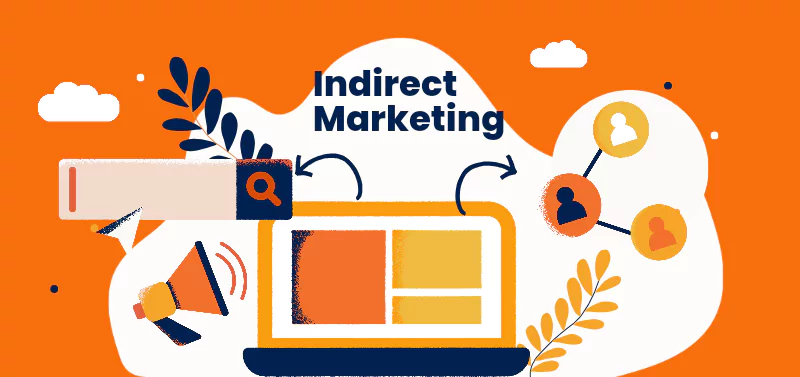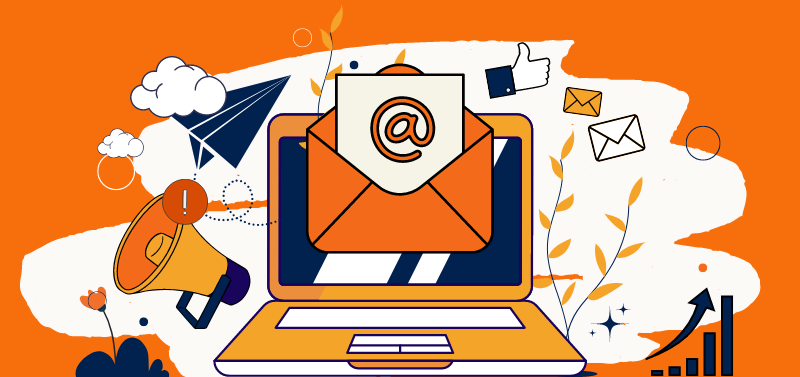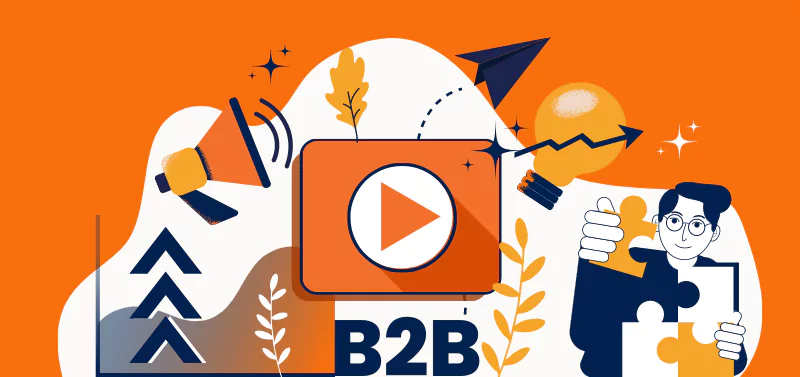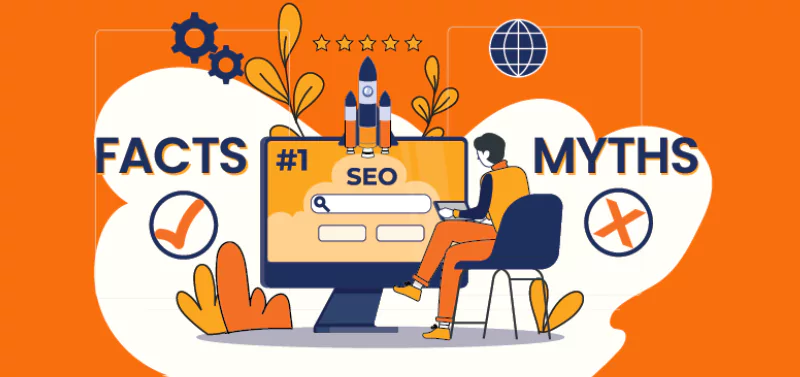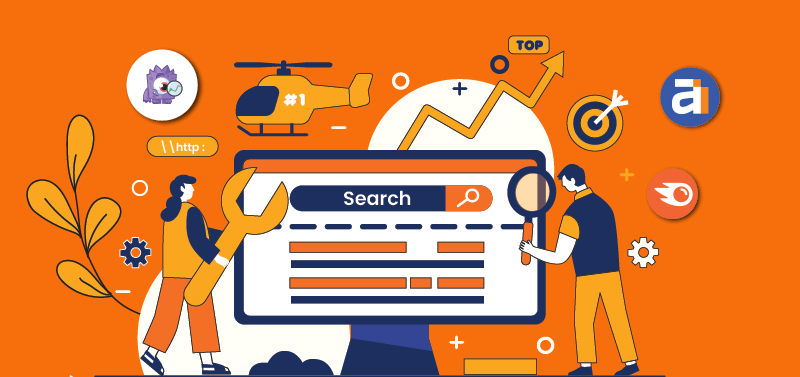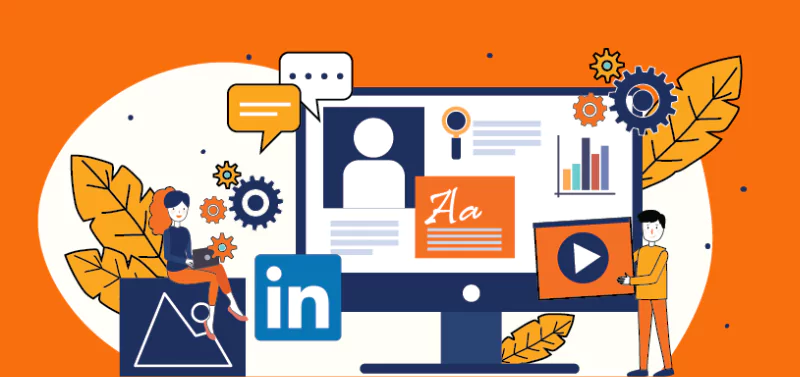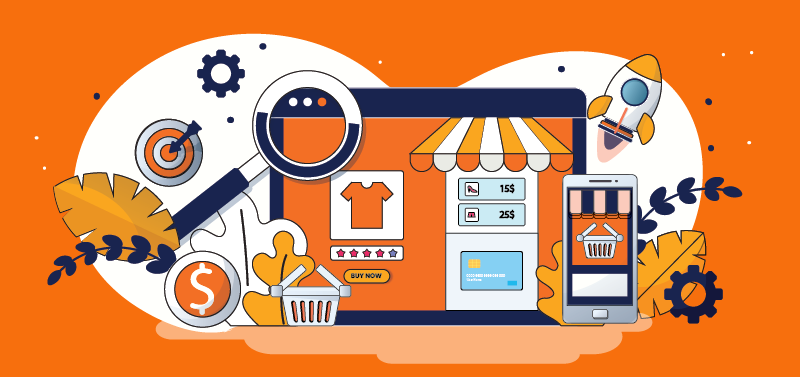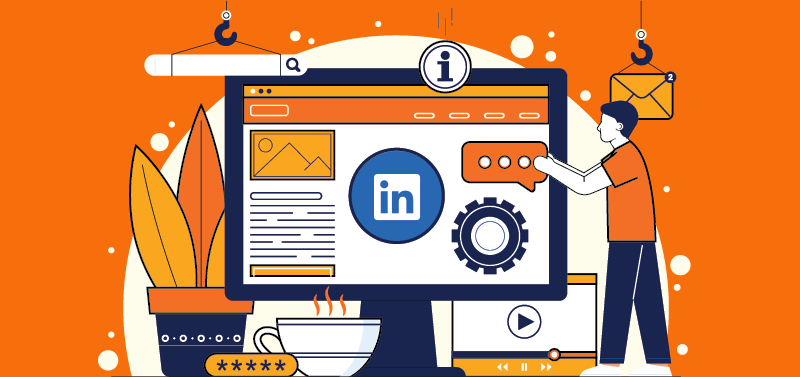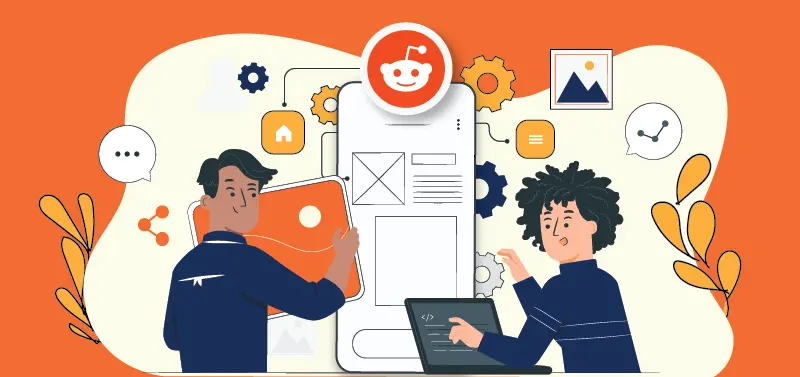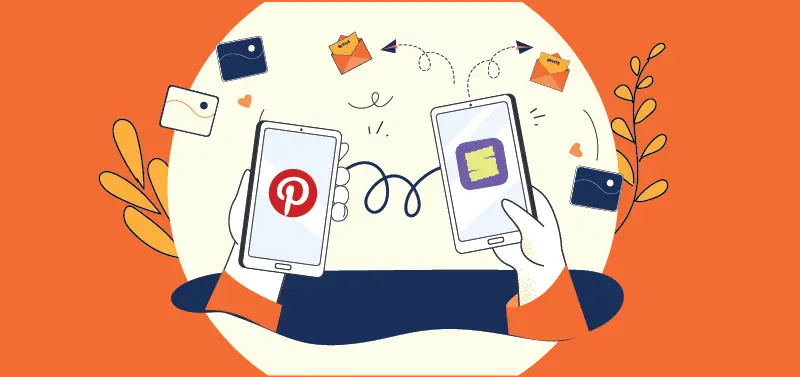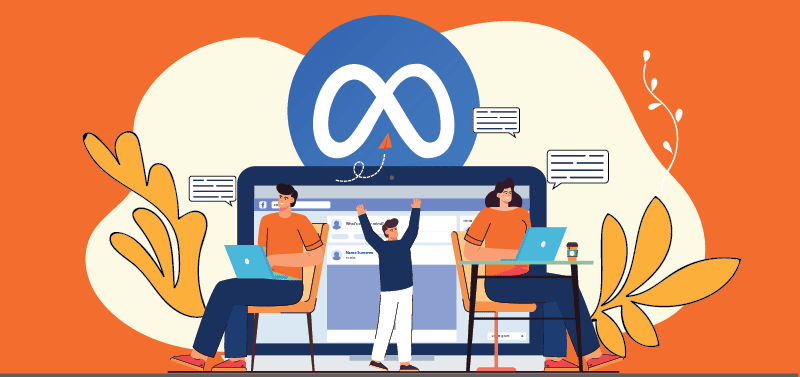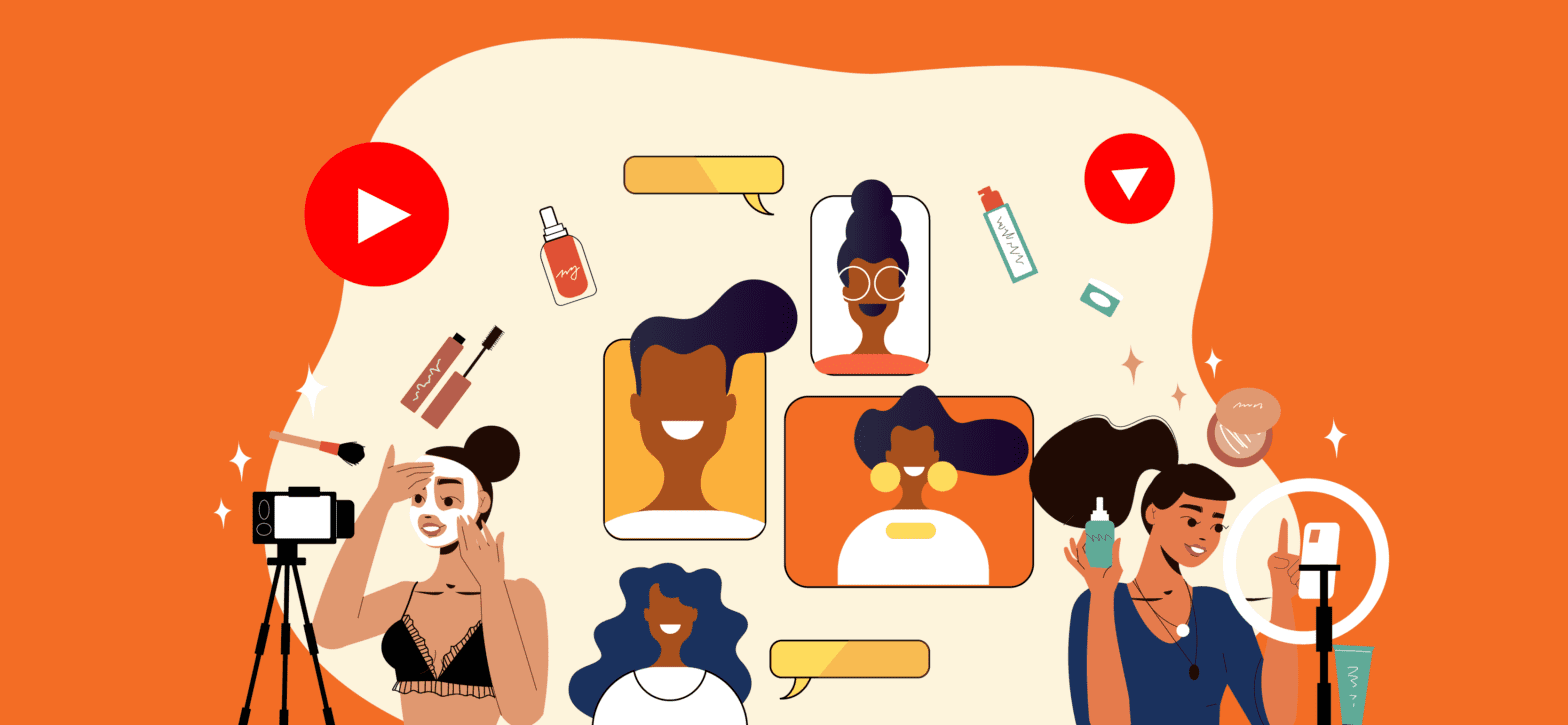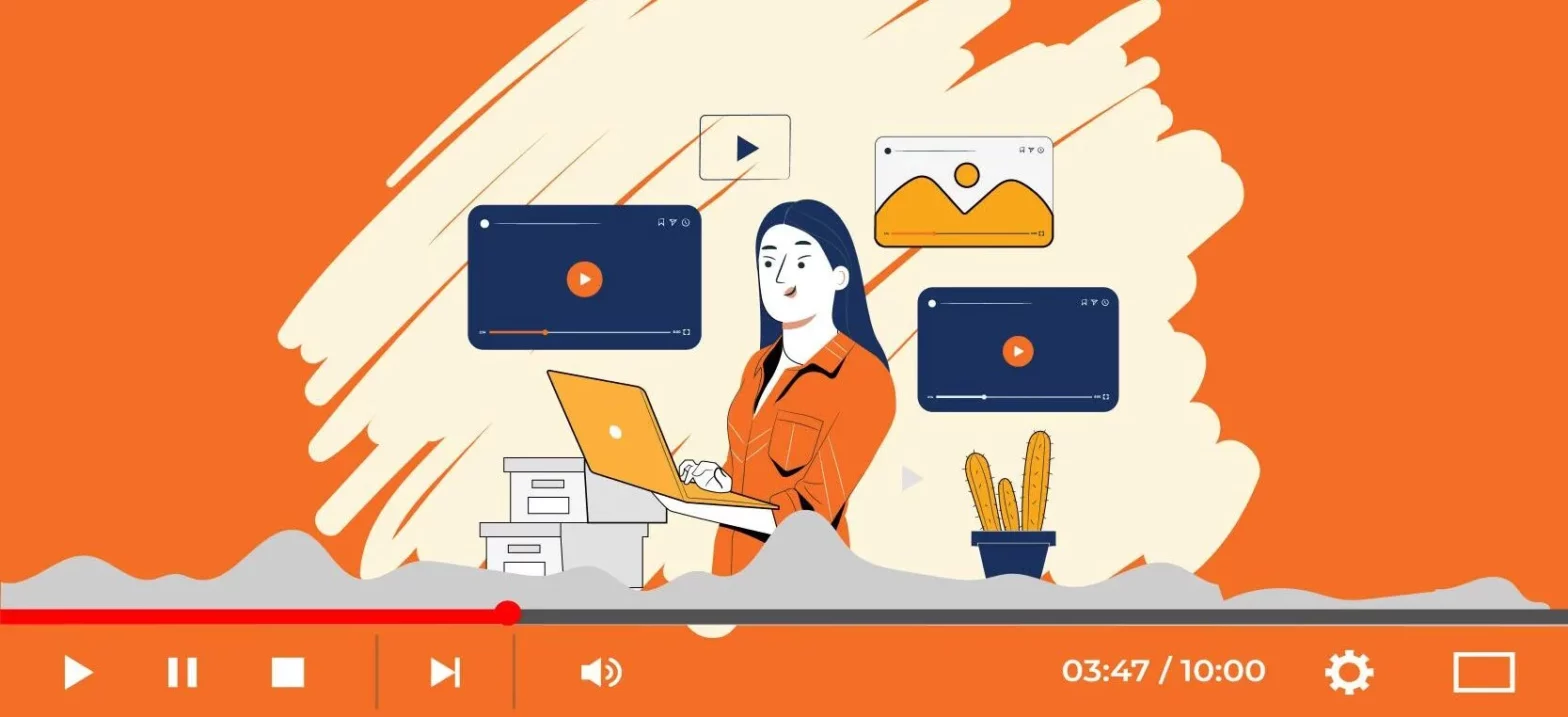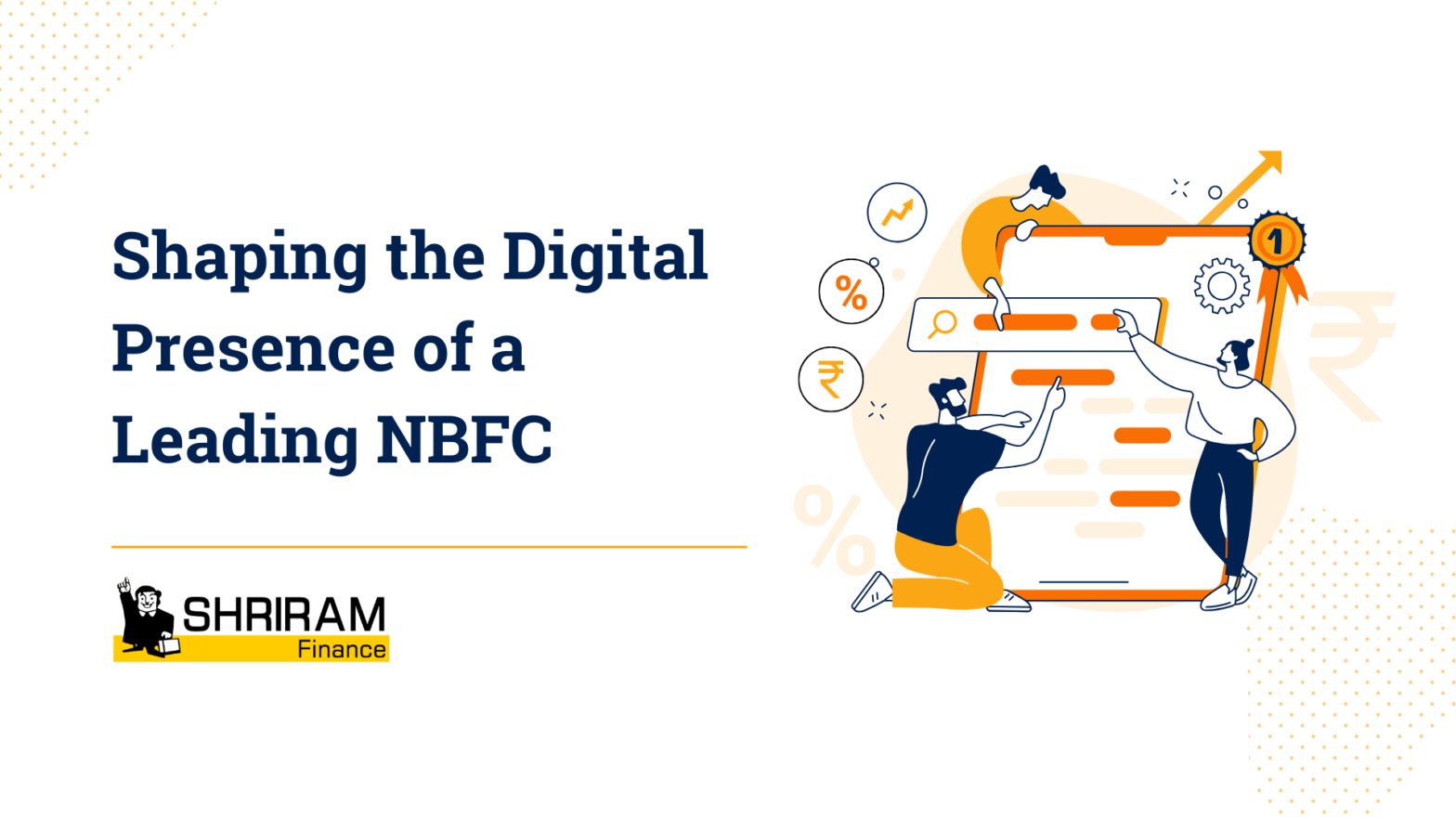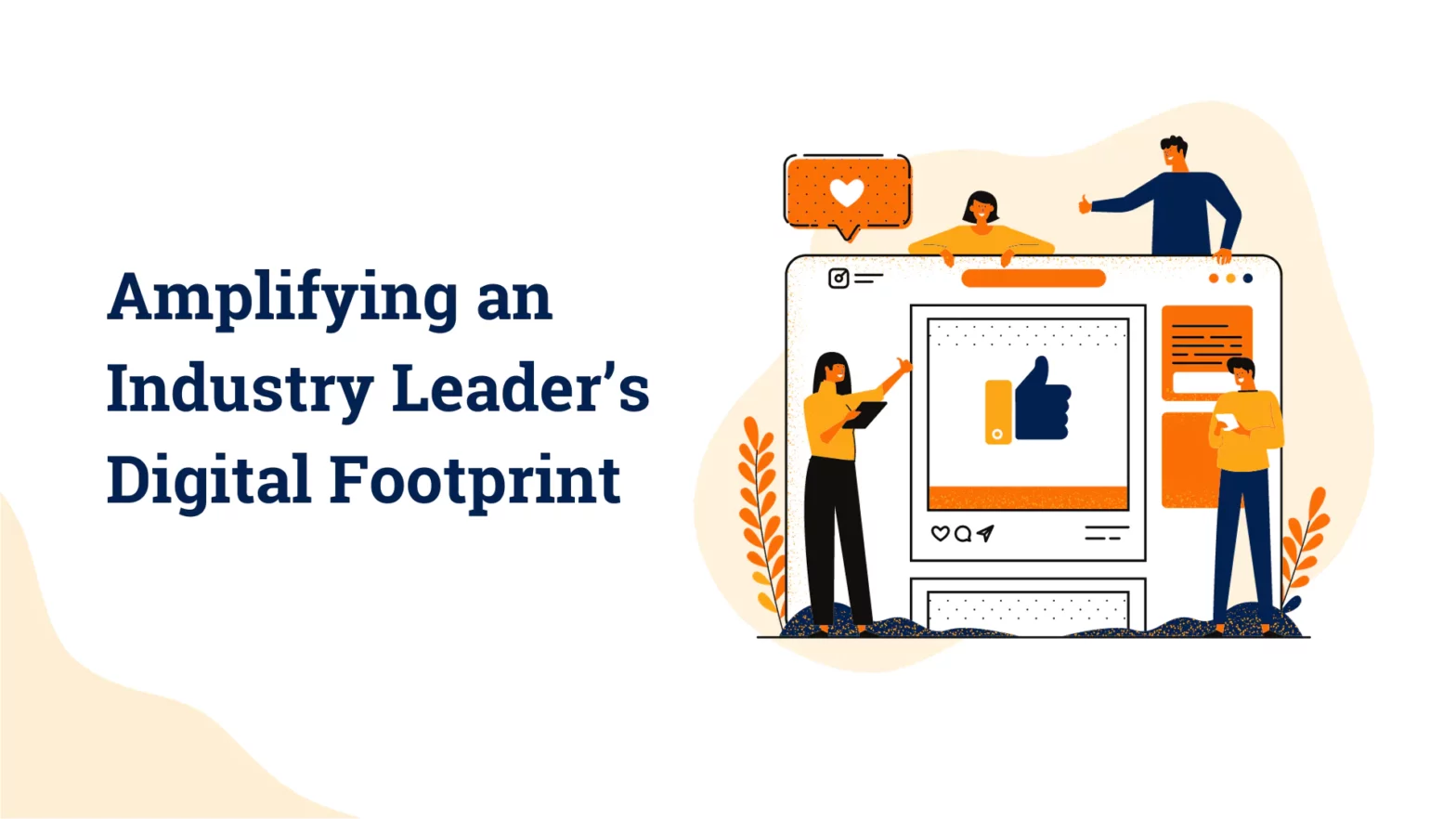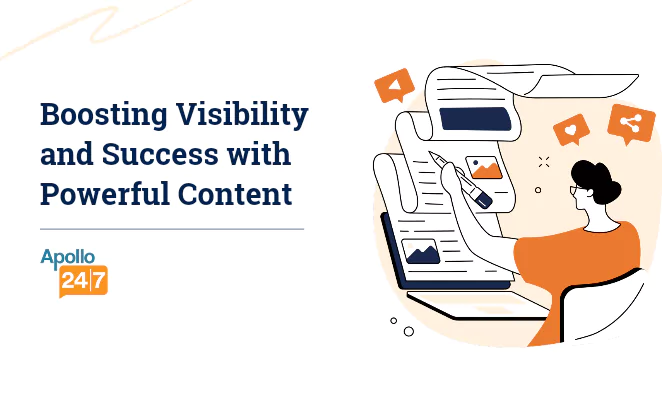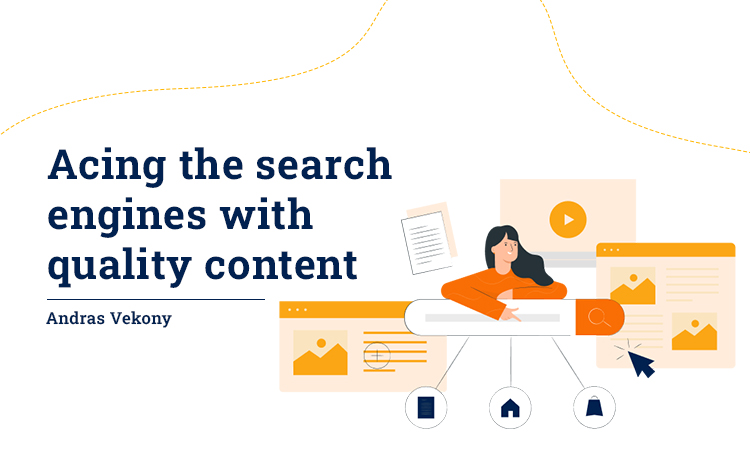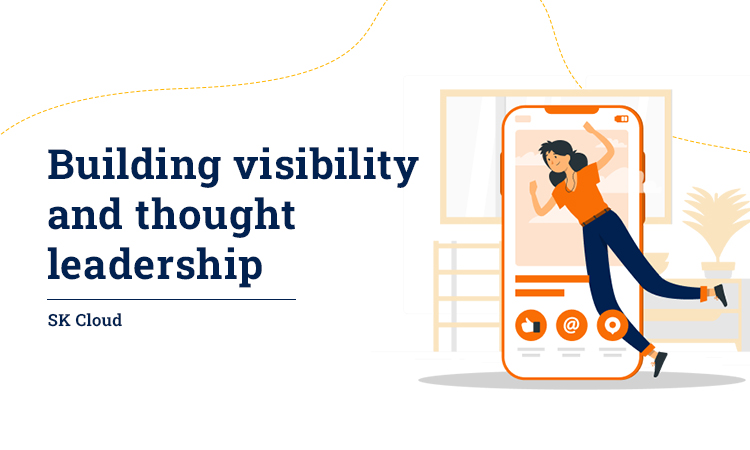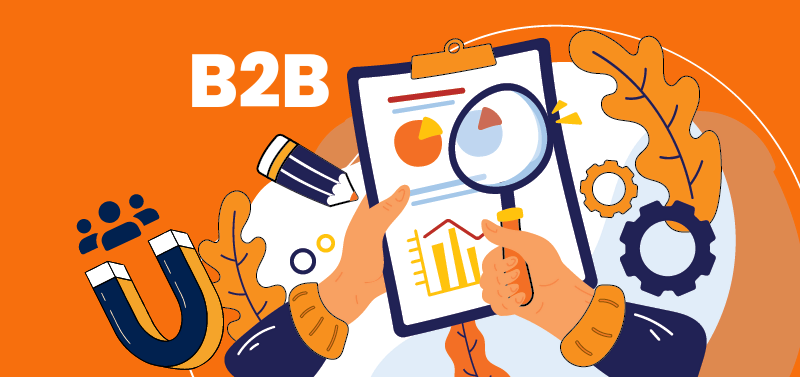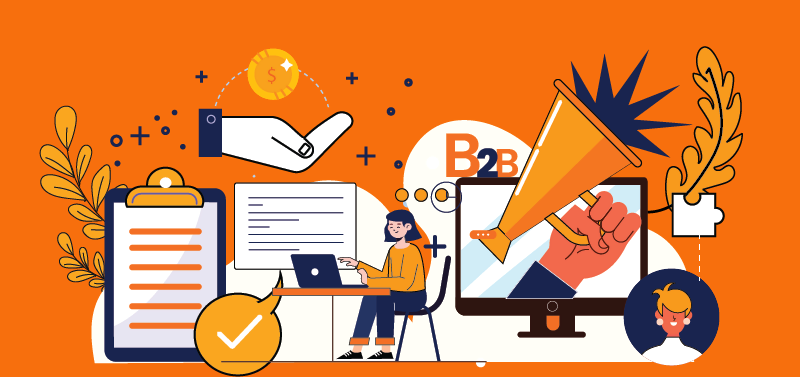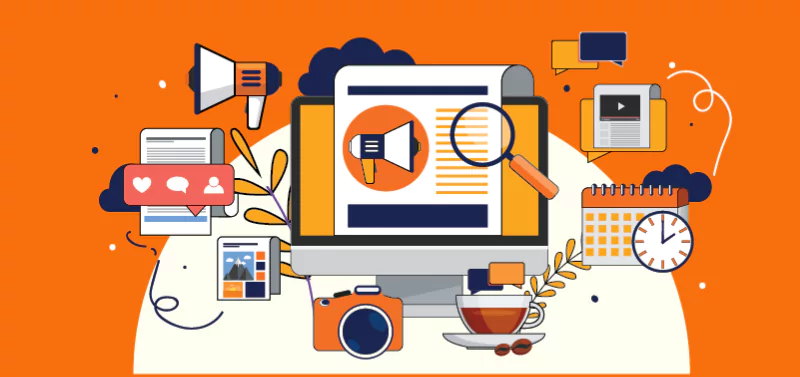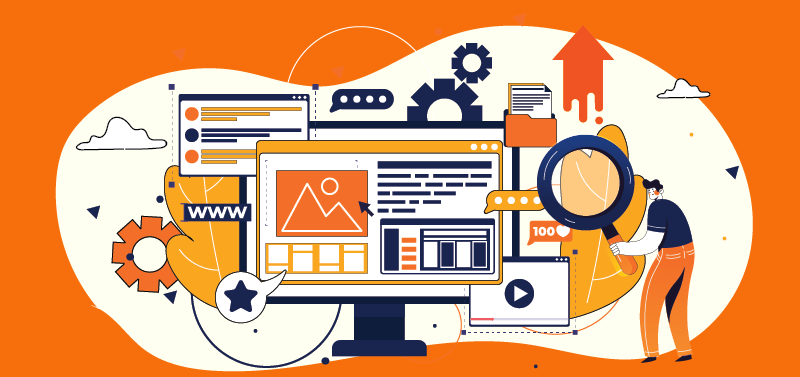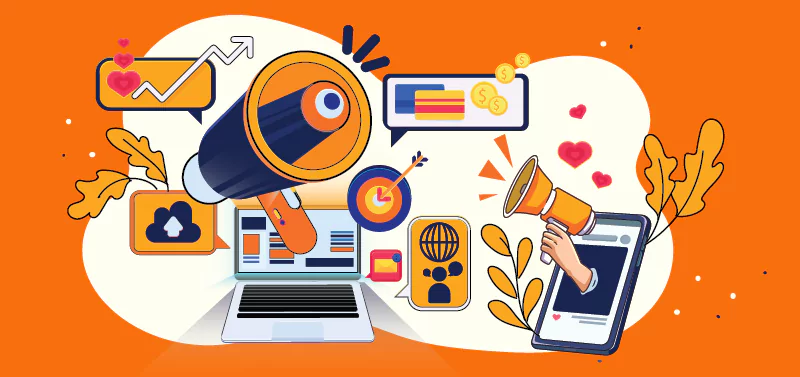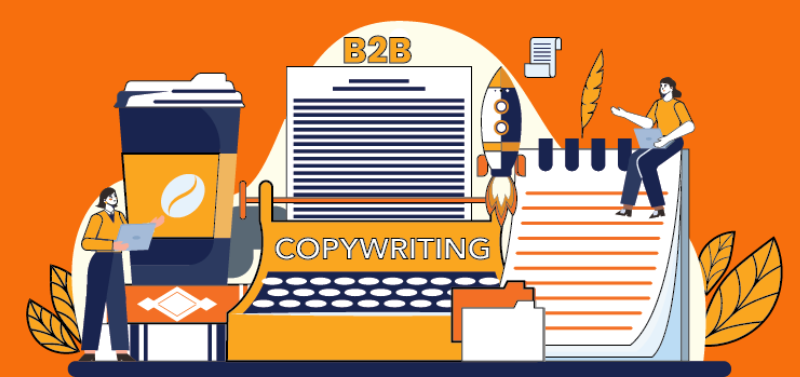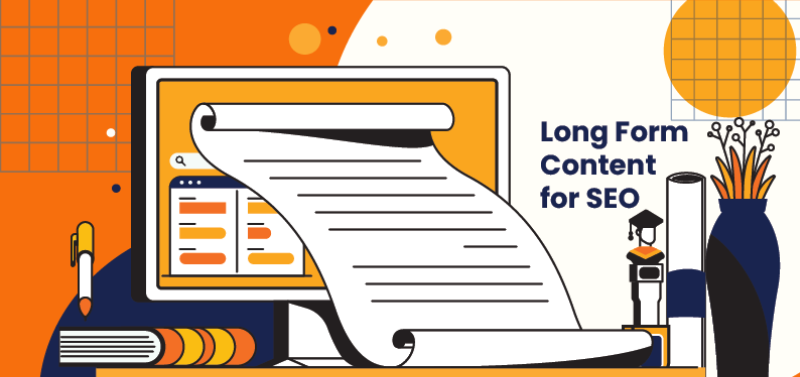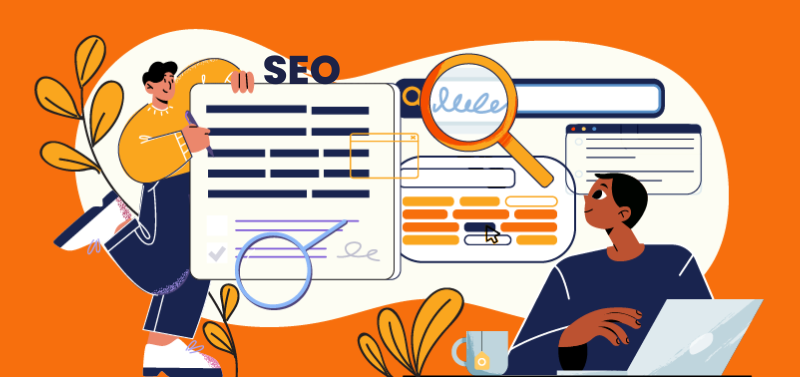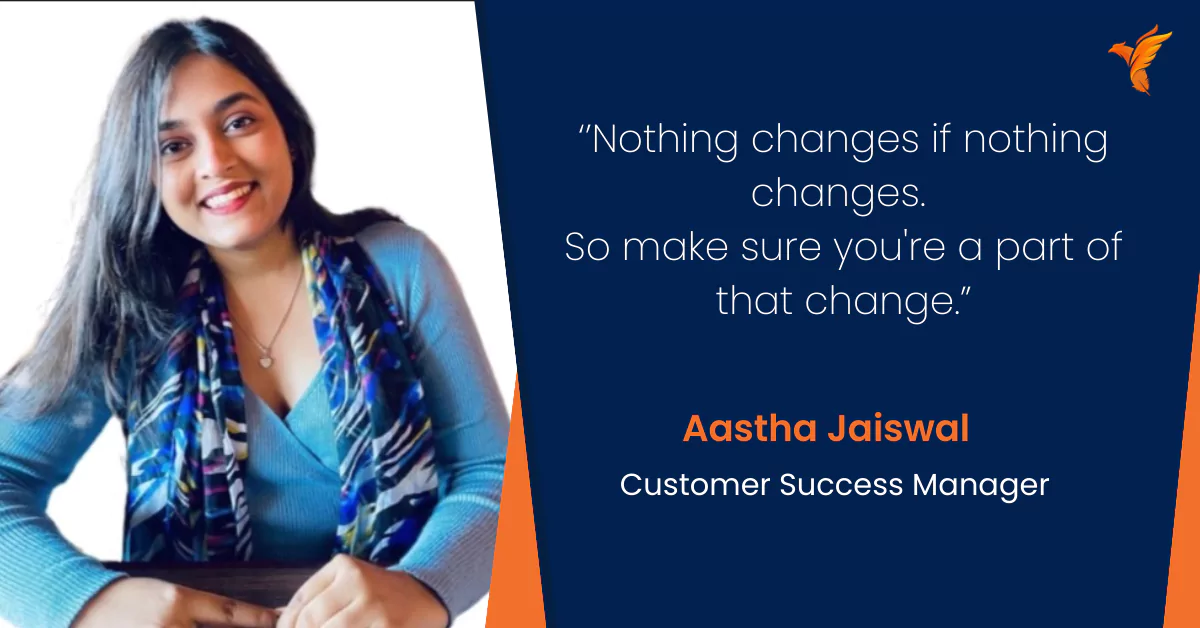Leveraging LinkedIn to Market Your B2B Brand Effectively
Author: Team WH
Published On: 06-04-23
Last Updated on: 27-11-23
Estimated reading time: 8 minutes
LinkedIn is undoubtedly one of the best social media platforms today when it comes to generating meaningful professional leads.
Companies are aware of the power that LinkedIn holds in B2B marketing. That explains the inclination of 97% of B2B marketers wanting to use LinkedIn. However, few companies know how to leverage company branding on LinkedIn to market their B2B brand effectively.
In this blog, you’ll get actionable tips for building your B2B brand using LinkedIn. So, let’s get right into it!
What is the Endgame in B2B Marketing?
We begin this journey of learning B2B marketing on LinkedIn by understanding the destination – the goal of B2B marketing. For context, B2C marketing focuses solely on selling a product to individual consumers. B2B marketing, on the other hand, aims for building visibility and perceivable value of its service for other businesses.
It is about making your brand a known commodity for other brands. This is what we mean when we talk about company branding on LinkedIn. Ultimately, your target market is other businesses, not individual consumers. That is a distinction many marketers oversee when strategising.
How to Build Your Company Brand on LinkedIn?
Building a brand on LinkedIn is a matter of consistency and patience. However, you can master this game with these simple tips on LinkedIn marketing. Bear in mind that LinkedIn advertises itself as a brand-building professional network. Therefore, they have various functionalities that offer an advertising advantage to B2B marketers.
1. Improve your company page on LinkedIn
Consider this. A potential client finds out about your brand and heads to its LinkedIn business profile. However, on the profile, they only find incomplete information. You have likely lost that lead.
Think of your business page on LinkedIn as your brand’s identity card. Without providing complete information on your identity card, people cannot understand who you are.
Therefore, the first step is to optimise your LinkedIn business profile.
Before you begin to do that, zeroing down on the intent of your profile might be of use. Once the intent of your profile is set, create a compelling profile that compels visitors to head to your company website. Here are some tips on optimising your company’s LinkedIn page:
- Draw attention to your product or services in the header image itself.
- Create a compelling piece of content for your description. Don’t offer basic information about your organisation. Instead, generate intrigue based on a value proposition for potential leads.
- Make your company website URL readily accessible to your visitors.
- List your company culture, accreditations, licences, and any other certifications that display your brand’s competence.
- Highlight your brand’s successes. If you are a small brand just starting out, even small successes can go a long way in showcasing measurable progress.
As Neil Patel rightly says, your company page is a pipeline for LinkedIn leads to visit your actual company website. As such, making sure that your business page facilitates dialogue with your brand is crucial to generating leads of value.
2. Be active and share valuable content
A crucial aspect of improving your B2B brand’s presence is an active profile. The best way to get active on LinkedIn is to contribute meaningfully to your connections’ feeds. Publishing content that offers information with no-strings-attached is a great way to build goodwill with your network.
Above and beyond that, your posts must include videos and images that are oriented to showcase your brand. On LinkedIn, video, specifically, can boost engagement 5x.
Your network will only increase if potential leads find that you offer value before anything else. Therefore, rather than focusing on executing a deal, think of your posts as a part of a longer conversation.
With each meaningful post, you draw in a potential lead slightly closer! Further, your company profile’s posts will also dictate the course of your company branding on LinkedIn.
3. Study your target audience
Your efforts must be targeted at reaching a specific type of person on LinkedIn. However, for you to do that, you must know who that specific person is for your brand.
For instance, a company dealing in EV batteries will want to target EV manufacturers as its audience. Why? Simply because the EV manufacturer is an opening into the market the EV battery dealer wishes to foray in.
LinkedIn offers a service known as Website Demographics. Essentially, LinkedIn will map out the profile of people visiting your website. It will also tell you about their allied interests and typical behaviour when using the platform.
You can craft your content or your profile to attract and retain the specific people you want in your network.
If you can accurately identify your target audience, you can maximise your LinkedIn strategy by deploying their allied marketing services. Here are a few LinkedIn Marketing services that you can leverage to bolster your brand’s presence on the platform.
- Sponsored messaging
- Sponsored content
- Conversion tracking
- Campaign manager
- Insight tag and Reporting and Analytics
Public engagement campaigns should lie at the very core of your LinkedIn marketing strategy. Without building awareness about your brand in your target audience, your brand will remain faceless. As a natural result, people will not buy your product.
In-built LinkedIn Features to Optimise Company Branding on LinkedIn
As we mentioned earlier, LinkedIn markets itself as a brand-building professional network. Therefore, the social media platform offers a few tools to assist company branding on LinkedIn.
In this section, we will explore a few in-built LinkedIn features that can boost your brand’s presence on LinkedIn.
- Boost feature
The boost feature is a simple service that you can pay for on LinkedIn. Engaging this service on a particular post would simply boost the reach of that post. As per the social media platform itself, the boost feature is particularly useful on posts that are already performing well.
- Conversion tracking feature
In simple terms, the conversion rate refers to the process of a potential client entering your website and executing an action beneficial for your brand in some manner. Therefore, even if a visitor downloads a brochure about one of your products, that counts as a successful conversion.
LinkedIn’s conversion tracking feature can offer a statistic-based understanding of which company ads are making an impact. Further, based on this information, you can adjust your existing marketing strategy or formulate a new one.
- Reporting and analysis feature
This is, perhaps, the best in-built tool that LinkedIn offers B2B marketers. As its name suggests, this feature simply analyses your brand’s conversions and ad performance.
Further, it also gives you a peek into what the demographic that is interested in your brand looks like.
All said and done, organic reach is a KPI in any marketing strategy. The Reporting and analysis feature can be used to keep a watchful eye on it.
This information too can be leveraged to customise your LinkedIn marketing strategy to secure a better ROI.
Take a Cue from The Success Stories of Company Branding on LinkedIn
Relying on tried and tested methods works a majority of the time. Therefore, why not also analyse how some companies are succeeding in their LinkedIn marketing campaigns?
- Microsoft
Microsoft is notably one of the most successful companies when it comes to LinkedIn marketing. A simple visit to their company page can answer the question of “how to brand yourself on LinkedIn?”
Microsoft’s strategy focuses on educating its followers and network. They also create engagement with the public at large by sharing information about the company’s activities.
- HubSpot
HubSpot is, arguably, the finest example of the “get active” principle we discussed earlier in the blog. The marketing company consistently creates industry-relevant, informative content. It has emerged as a focal point for professionals in the content niche and has created an infallible brand identity.
Over the years, HubSpot’s company page has garnered immense organic reach that extends far beyond its 903K followers.
Conclusion
By the end of this blog, one thing should be abundantly clear. For any B2B marketing campaign, the presence of a solid LinkedIn strategy is vital for success. You, as a marketer, can leverage LinkedIn as a driving force of lead generation. Incorporating the tips in this blog will assist you in boosting your LinkedIn conversion rates. With consistency, your company branding on LinkedIn will contribute to profitable revenue generation.
Frequently Asked Questions
1. How often should companies post on LinkedIn?
The ideal posting frequency on LinkedIn varies, but consistency is key. Aim for 3-5 posts per week to stay visible to your audience. Monitor engagement metrics to refine your posting schedule, ensuring your content aligns with your audience’s online activity.
2. How to grow a company page on LinkedIn?
To grow your company page on LinkedIn, start by optimizing your profile with a compelling banner, logo, and description. Share relevant content regularly, engage with comments, and encourage employees to follow and share your posts. Use LinkedIn analytics to refine your strategy.
3. What is employer branding on LinkedIn?
Employer branding on LinkedIn involves shaping your company’s image as an attractive employer. It highlights your company culture, values, and opportunities, aiming to attract top talent. Effective employer branding can enhance recruitment efforts and employee retention.
4. Is LinkedIn good for branding?
Yes, LinkedIn is an excellent platform for branding, especially for B2B businesses. It allows you to showcase your expertise, build professional networks, and share thought leadership content. Leveraging LinkedIn’s various features can help establish your brand’s authority and credibility in your industry.
5. Why is LinkedIn marketing important?
The simple fact is that LinkedIn is the world’s largest professional networking platform. The direct consequence of this large user base is the availability of a large potential market and audience. With over 600 million registered users, LinkedIn also offers advertising services to companies. In addition to optimising company pages and user engagement for greater organic reach, companies can also consider advertising on the platform.


